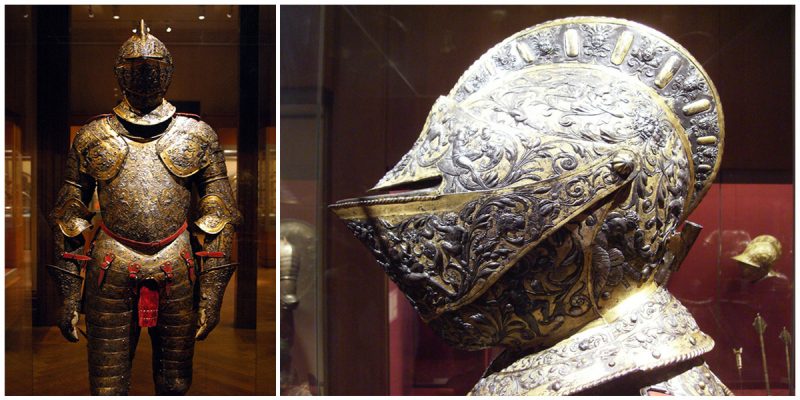Henry II, also known as Duke d’ Orleans, was a great monarch of the House of Valois and was King of France from 1547 until 1559.
He was a competent administrator who was an active suppressor of Protestants in his territory. Like his father, Francis I, Henry favored the arts, and he was a patron of Renaissance culture. The King was involved in projects which were begun by Francis I, including the reconstruction of Louvre, and his major project was the chateau of Anet. He also loved literature, especially poetry, and wherever he appeared, he was beautifully dressed in the latest fashion.
Married to Catherine de’ Medici and the father of future monarchs Francis II, Henry III, and Charles IX and seven other children, King Henry fell in love with the beautiful aristocrat Diane de Poitiers when he was 16 and remained in love with her until the day he died. Diane was 20 years his senior.
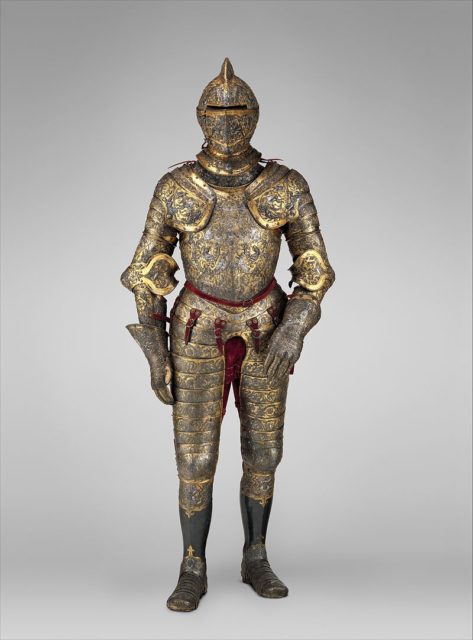
One of his most magnificent items of dress was the Parade Armor which today can be seen on display in the Metropolitan Museum of Art in New York. It is believed that this fabulous armor dates back to the 16th century (1553-1555) and it was intricately decorated by Etienne Delaune, a French goldsmith and engraver. He had a great style which was based on the style of the Little Masters of Germany.
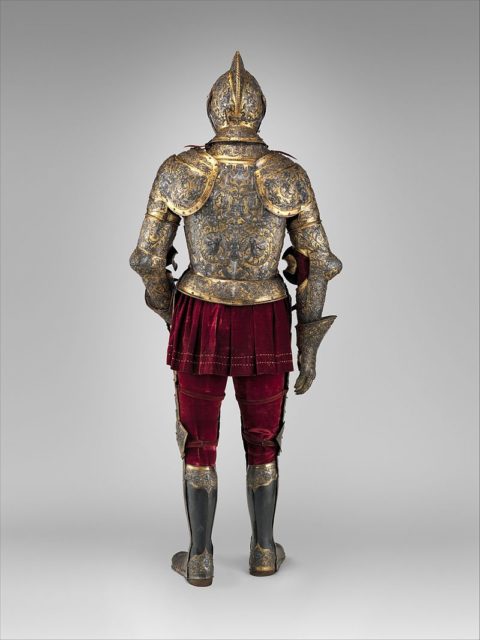
The armor was one of the king’s ceremonial costumes and is embossed on the breastplate and back with figures that reflect his great military achievements. The whole armor is adorned with images of human and fantastical characters.
At the center of the breastplate is a figure of a Roman warrior receiving a tribute of arms from a group of ladies who are kneeling, and above them, on the shoulders, the god Apollo can be seen chasing the nymph Daphne.
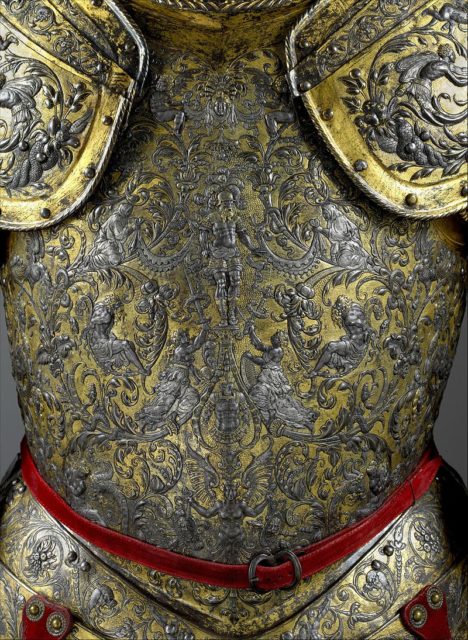
There is also a carving of Apollo on the back of the armor, but in this depiction, he is slaying the monster Python. Henry’s badge, in the shape of a crescent moon, appears in several places.
Many historians and art critics believe that the armor is one of the most elaborate of its kind in France. There are about 20 sketches from the 16th century which many historians believe were made by Delaune.
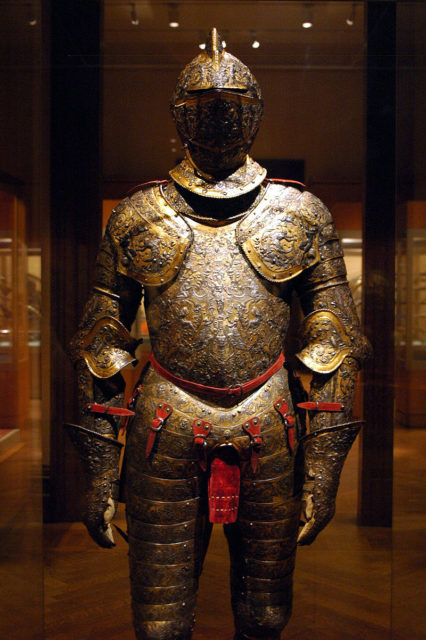
Later additions to the original design are attributed to Jean Cousin the Elder and Baptiste Pellerin. All three were very famous Parisian artists of the mid-16th century. In 1939, the armour was acquired by the Metropolitan Museum of Art with the help of the Harris Brisbane Dick Fund. The parade armor was a unique piece of Renaissance art which was intended to glorify the military power of the person that wore it.
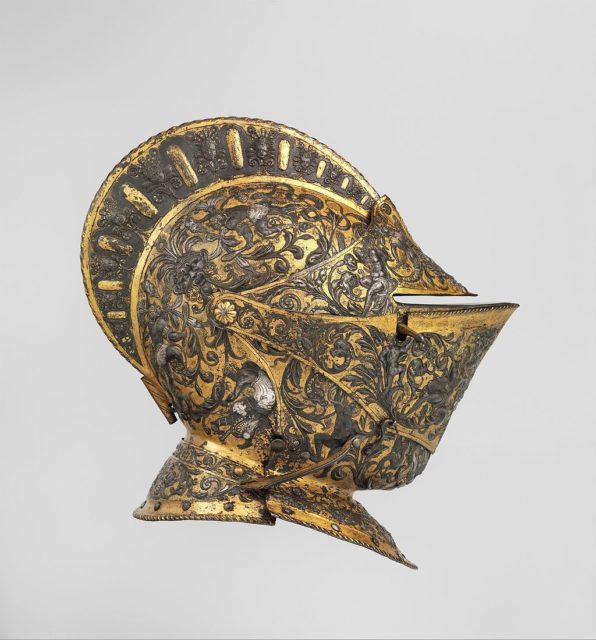
There are not many surviving examples of this kind of armor and parts that can be seen today include only the helmets, the shields, with few full suits remaining. Delaune remains the most significant contributor to this form of armor, and made many other pieces for Henry II.
He made a panel for Henry’s horse and some shields which are now in the Louvre museum. Another full suit made for Henry can be seen at the Museum of Ethnology in Vienna.
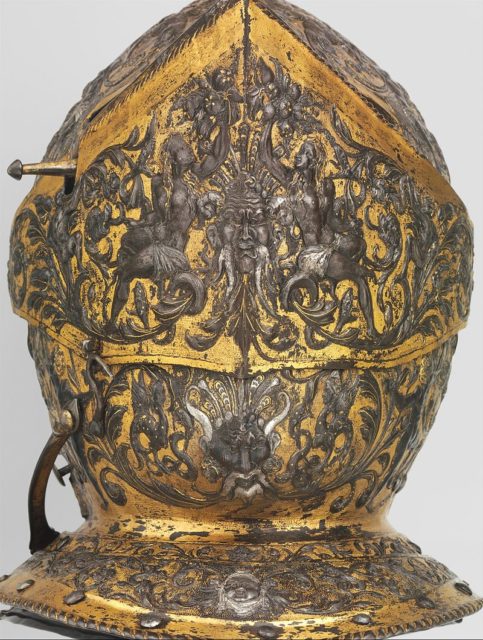
Delaune also designed the Shield of Henry II of France (in the Metropolitan Museum of Art), and there are at least six surviving examples of his magnificent work in Turin and Vienna. According to Wikipedia, on the shield there is a scene that depicts Hannibal’s Victory of the Romans at Cannae in 216 BC.
Read another story from us: Dendra panoply, the oldest body Armour from the Mycenaean era
Besides the designer, many artists were involved in the making of the armor because it is a very complex form of art. It was probably made at the Louvre Atelier of Royal Armorers, and it was not created for war because it was impractically designed for defense. The parade armor was made only for state occasions and processions.
Henry II died after a jousting accident. A fragment of a splintered lance drove into his eye and he contracted septicemia. It is not known what armor he wore at the joust.
